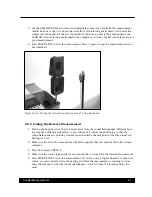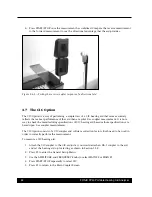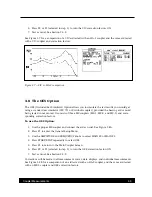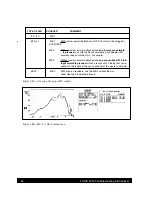
Automated Test Sequences
65
5. MAX: Maximum frequency response measured and the frequency at which it occurred
6. SPA/HFA SSPL90: Three frequency average of the OSPL90 curve
7. SPA/HFA FOG: Three frequency average of a full-on gain measurement at 50 (or 60) dB SPL
8. REF TEST GAIN: The measured reference test gain
9. EQ INP NOISE: Equivalent input noise
10. RESP LIMIT and F1 and F2: The response limit level and the two frequencies where the
response curve crossed over this level
11. THD: The total harmonic distortion measurements
12. BATTERY: Battery current drain
13. I/O CURVE: Input/output measurement at 2000 Hz
Figure 4.3.3—ANSI 87 results
4.4 ANSI S3.42-1992
The ANSI 92 test sequence is a series of tests designed for non-linear hearing aids. Although it is
not used by manufacturers to label hearing aids, it can give you valuable information not present in
the ANSI S3.22 labeling standard. ANSI 92 is only available if you have the Composite Option on
your analyzer.
ANSI 92 uses the Composite signal to run a family of frequency responses at different input levels.
The Composite signal is critical for accurate testing of non-linear hearing aids because of a well-
known effect associated with pure-tone sweeps known as “artificial blooming.” When a pure-tone
sweep is presented to a non-linear hearing aid, the aid’s AGC circuits can sometimes react by inflat-
ing their gain at low frequencies. This can result in inaccurate frequency response curves. This
artificial blooming of the low frequencies does not occur when a broadband signal, such as the
Composite signal, is used.










































